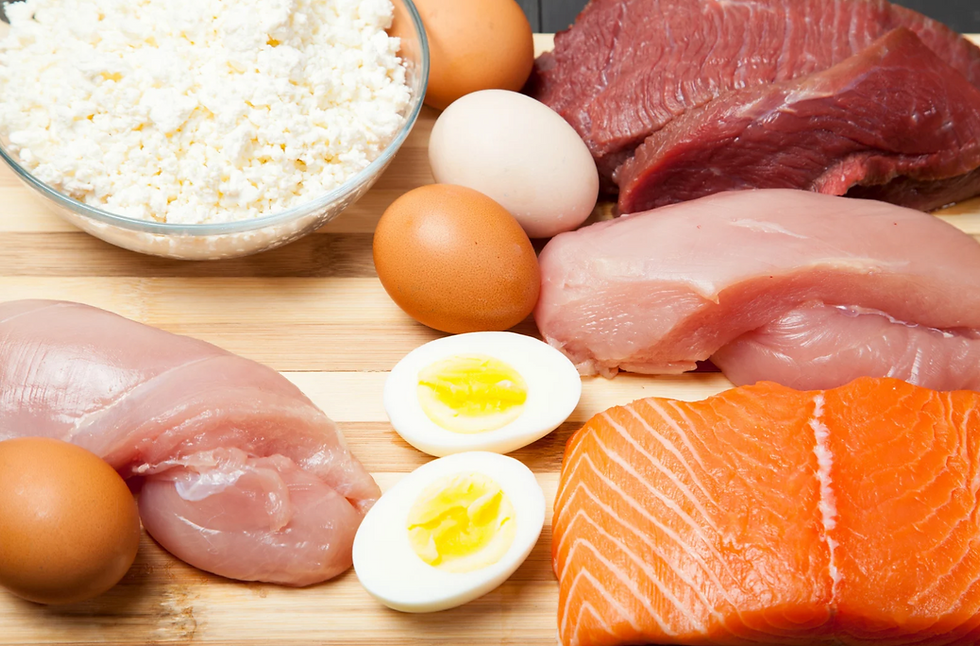What Is Metabolic Associated Fatty Liver Disease (MAFLD)?
- Orsolya Szathmari

- Oct 22
- 4 min read

Metabolic (dysfunction) Associated Fatty Liver Disease or ‘MAFLD’, previously called Non-Alcoholic Fatty Liver Disease (NAFLD), is a prevalent and potentially serious condition that affects about 100 million Americans and 25% of the world’s population. It is the most common chronic liver disease in the Western world. Despite its epidemic, MAFLD remains relatively misunderstood by many physicians and dietitians. MAFLD is closely associated with other metabolic disorders, including visceral obesity, hypertension, elevated blood glucose levels and abnormal liver enzymes.
In this blog, we'll inquire the key aspects of MAFLD, including its causes, symptoms, diagnosis, preventive measures and treatment.
What is MAFLD (NAFLD)?
Metabolic Associated Fatty Liver Disease is a medical condition characterized by the accumulation of fat in the liver of individuals who consume little to no alcohol. MAFLD exists on a spectrum, with the earliest stage being simple enlarged fatty liver, or steatosis. If not managed, it can progress to a more severe form called Non-Alcoholic Steatohepatitis (NASH), which involves liver inflammation and may lead to fibrosis, cirrhosis, and even liver cancer.
Causes of MAFLD
Obesity: Obesity is a significant risk factor for MAFLD. Excess body fat, especially around the abdomen, contributes to the accumulation of fat in the liver.
Insulin Resistance: insulin resistance (a condition when the body doesn’t respond as it should to the hormone insulin for regulating blood sugar levels) often associated with type 2 diabetes, can lead to MAFLD. It impairs the liver's ability to regulate glucose and fat metabolism.
Unhealthy Diet: A dietary pattern characterized by excessive intake of added sugars, ultra-processed foods, refined grains, and unhealthy fats, as well as overall caloric overconsumption, is strongly associated with an increased risk of developing metabolic dysfunction–associated fatty liver disease (MAFLD).
Sedentary Lifestyle: lack of physical activity combined with overeating can contribute to obesity and insulin resistance, making it an indirect risk factor for MAFLD.
Genetics: Genetic factors can also play a role in MAFLD, making some individuals more predisposed to the condition than others. But if these individuals follow a healthy, species appropriate diet, they will not develop MAFLD.
Symptoms
In its early stages, MAFLD often presents with no noticeable symptoms. However, as the disease progresses, individuals may experience:
Fatigue
Unexplained weight loss
Abdominal discomfort
Jaundice (yellowing of the skin and eyes)
Enlarged liver
It's important to note that many people with MAFLD remain asymptomatic until the disease has reached an advanced stage.
Diagnosis
MAFLD is typically discovered incidentally through routine blood tests or imaging studies. Common diagnostic methods include:
Liver Function Tests: Elevated liver enzymes can indicate liver inflammation or damage.
Imaging: Ultrasound, CT scans, or MRIs can visualize fat accumulation in the liver.
Liver Biopsy: In some cases, a liver biopsy may be necessary to determine the extent of liver damage.
Preventive Measures and Treatment
Preventing MAFLD and managing its progression is crucial. But how to do it?
It’s no wonder that most people are confused about the dietary recommendations and they don’t know who to believe. It’s only after following their doctor's advice and having no improvement, people realize that they need to look for other solutions.
Diet
The official recommendation is to limit fat intake, especially saturated fat and trans fats and replace them with “healthy” plant oils. It is also advised to consume many servings of fruits, vegetables and whole grains a day and limit only sugar and fructose. This is a high carbohydrate, low fat diet, that will not necessarily prevent MAFLD on the long run.
The most effective and sustainable approach to reducing inflammation and supporting liver health is adherence to a diet emphasizing organic, seasonal whole foods, rich in high-quality protein and balanced in healthy fats and carbohydrates.

Physical Activity
If you have an acute disease, the best you can do is to eat the right way and rest as much as possible to let your body heal. As soon as your health has improved, you can start to practice regular physical activity. I recommend walking, hiking, sprints and weight training. The goal is to build as much muscle as possible and improve VO2 max.

Avoiding Alcohol
Although metabolic dysfunction–associated fatty liver disease (MAFLD) is not caused by alcohol consumption, excessive alcohol intake can exacerbate hepatic inflammation and accelerate disease progression. Moderate consumption—such as small amounts of high-quality wine with meals—may not pose significant harm for most individuals; however, overconsumption of alcoholic beverages increases the risk of MAFLD progression and contributes to the development of numerous other chronic diseases.
Regular Monitoring
If diagnosed with MAFLD, regular follow-ups with a qualified healthcare provider are essential to monitor the progression of the disease.
Conclusion
Metabolic Associated Fatty Liver Disease is a common and potentially serious condition that can lead to severe liver damage if left untreated. However, with the right diet and lifestyle changes it is possible to prevent its progression and also reverse it. Remember that a proactive approach will make a significant difference in your overall health.
The most important dietary modifications you will need to do:
Avoid excessive sugar and sweeteners
Avoid processed food high in refined carbs and fats
Eat a whole food based diet with organic local and seasonal foods
Control food amount and avoid overeating
Make sure your blood glucose level is ideal
Limit alcohol
It's crucial to remember that MAFLD can progress to more severe liver conditions like non-alcoholic steatohepatitis (NASH) or cirrhosis. So it’s important to switch to the ideal diet as soon as possible to prevent more serious outcomes.
Please note that always consult with a qualified healthcare provider before starting any therapeutic diet.
References
Impact of a low-carbohydrate and high-fiber diet on nonalcoholic fatty liver disease
NAFLD and Extra-Hepatic Comorbidities: Current Evidence on a Multi-Organ Metabolic Syndrome
Testing NAFLD





Comments